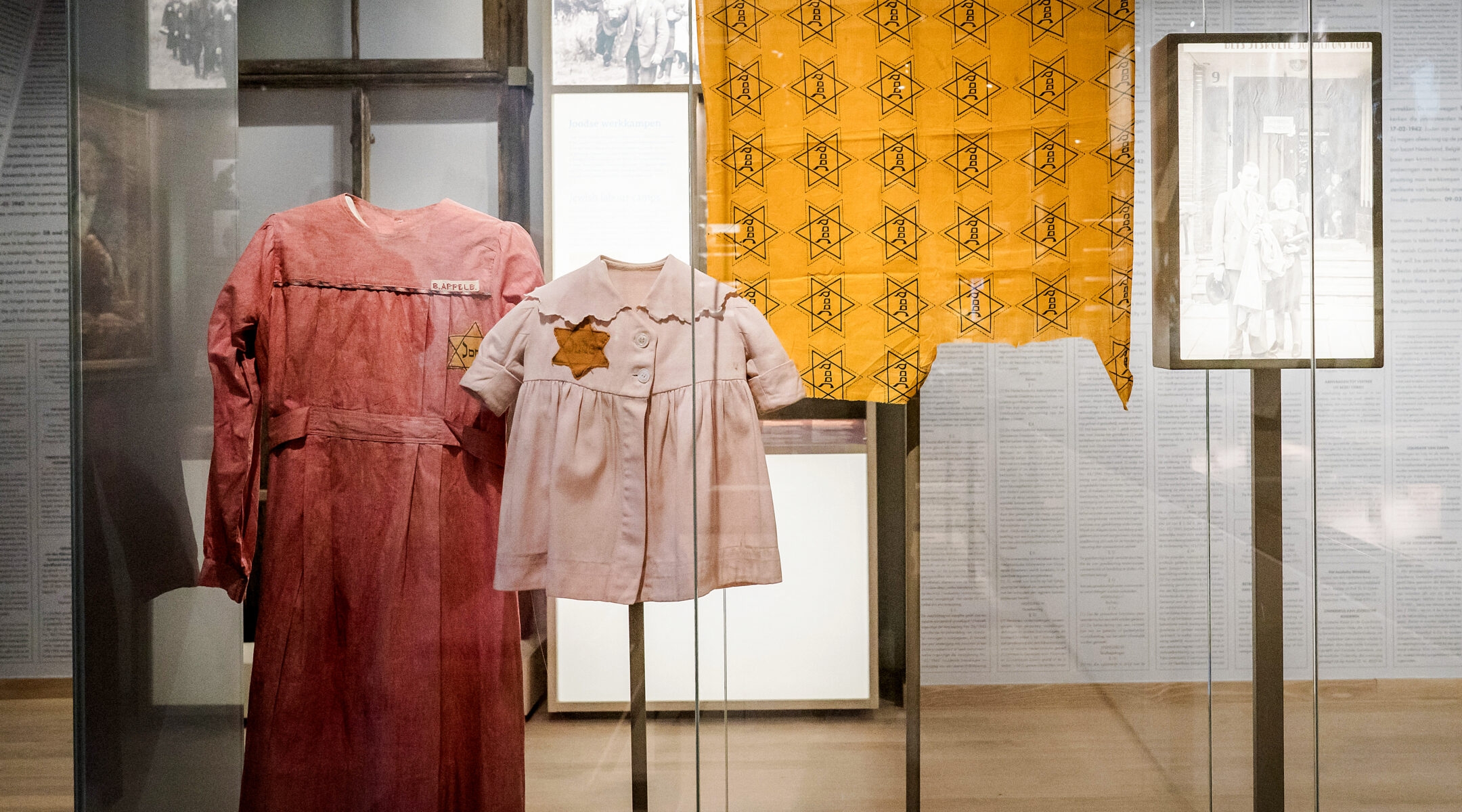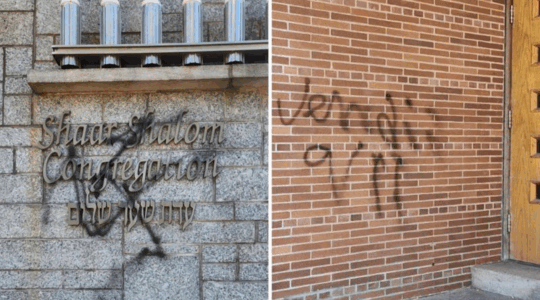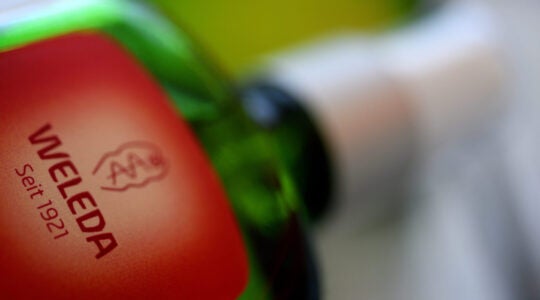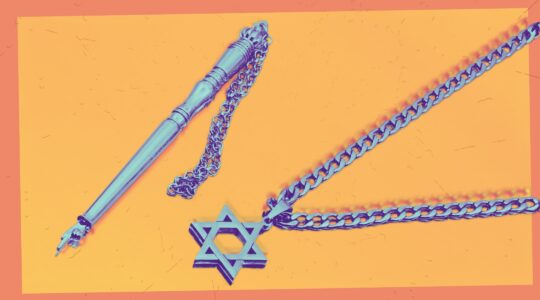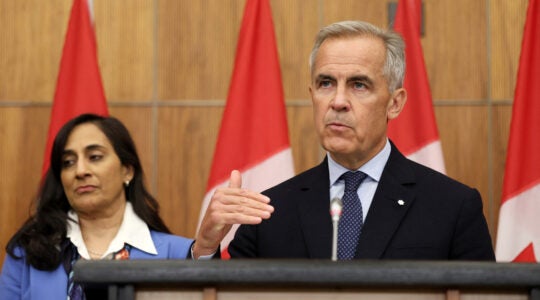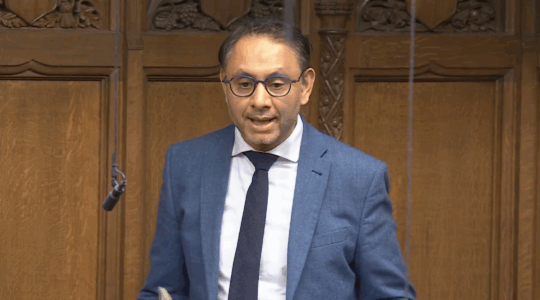(JTA) — The Anne Frank House in the heart of Amsterdam is one of the Netherlands’ most-visited tourist destinations. Outside of the city a memorial commemorates the Westerbork transit camp, where the Franks were sent on their way to Auschwitz and Bergen-Belsen. Several other museums tell the story of Dutch resistance against the Nazis.
But no museum has chronicled the full story of the country’s role in the Holocaust — until now.
Amsterdam’s National Holocaust Museum, which opened to the public on Monday, is the first institution dedicated to the overarching history of the Holocaust in the Netherlands, where three in four Jews were killed.
The museum’s leadership believes it offers a necessary corrective to narratives that have prevailed over the 80 years since the Netherlands was liberated from Nazi occupation.
“We’ve all been very happy with 1.2 million [annual] visitors to the Anne Frank House, but at the same time, it is one of so many different personal histories,” Emile Schrijver, director general of the Jewish Cultural Quarter, told the Jewish Telegraphic Agency. “As the Franks were a relatively well-to-do family of German refugees in Amsterdam, their story was in a way very untypical of what went on here — with the clause, of course, that they were killed like all the others.”
The Holocaust museum was nearly 20 years in the making, originating in 2005 as a proposal from the Jewish Cultural Quarter, which runs Jewish cultural institutions in Amsterdam. For decades before that, the notion that the Holocaust was an integral part of Dutch history faced broad resistance.
“The Dutch have cherished the false notion that we were a country of resisters, that we became the victim of Nazism — the occupier versus the occupied — and that the war was difficult for everybody and there was no reason to give the specific Jewish experience a special place in memorialization,” said Schrijver.
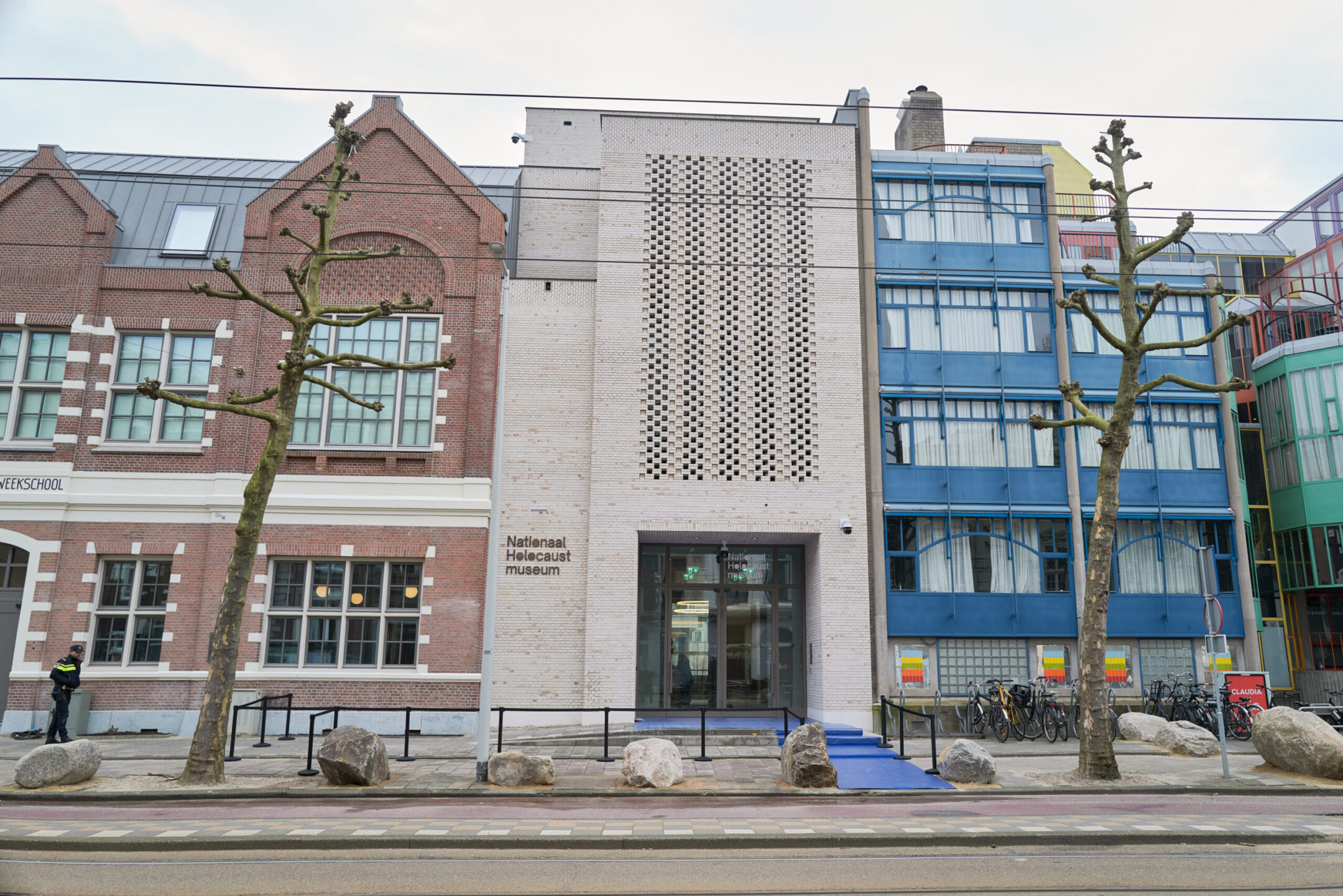
The exterior of the National Holocaust Museum in Amsterdam, Netherlands, as seen on March 10, 2024. (Pierre Crom/Getty Images)
The National Holocaust Museum’s head curator, Annemiek Gringold, said even in the process of establishing the museum, she often fielded questions about the project’s necessity. Some Dutch audiences suggested that since memorials to Dutch victims of the Holocaust already existed, this museum should broaden its scope.
“In the public debate and academia, we had discussions saying that the museum should deal with genocides in general, or be a museum about human rights,” Gringold told JTA. “Our argument was always that this history, in which more than 100,000 Jews from the Netherlands were persecuted, deported, robbed and murdered, should be firmly part of our national collective memory.”
That history, which is detailed in the museum’s main exhibition, might find a more receptive audience now than in the past. The museum launches amid widening openness to discussing Dutch collaboration with the Nazis, seen as crucial in making Holland the Western Eurpean country with the highest per capita number of Jewish victims.
Next year, the country will open its archives about Dutch collaboration with the Nazis to the public for the first time. And last week, historians revealed that GVB, the Amsterdam public transport company that still operates today, sought compensation even after the war for transporting local Jews — including Anne Frank — to trains that would take them to concentration camps.
Ronald Leopold, the executive director of the Anne Frank House, said he welcomed the museum as another entry point for education about the Holocaust in the Netherlands. He argued that the “full story” is impossible to tell, with every museum offering a different window to history.
“The new Holocaust museum in Amsterdam will not paint a full picture of the Holocaust when you look at how the Holocaust played out in Eastern Europe,” he said. “I don’t think any one of us will be able to paint that full picture. We always put a certain light on certain aspects of it.”
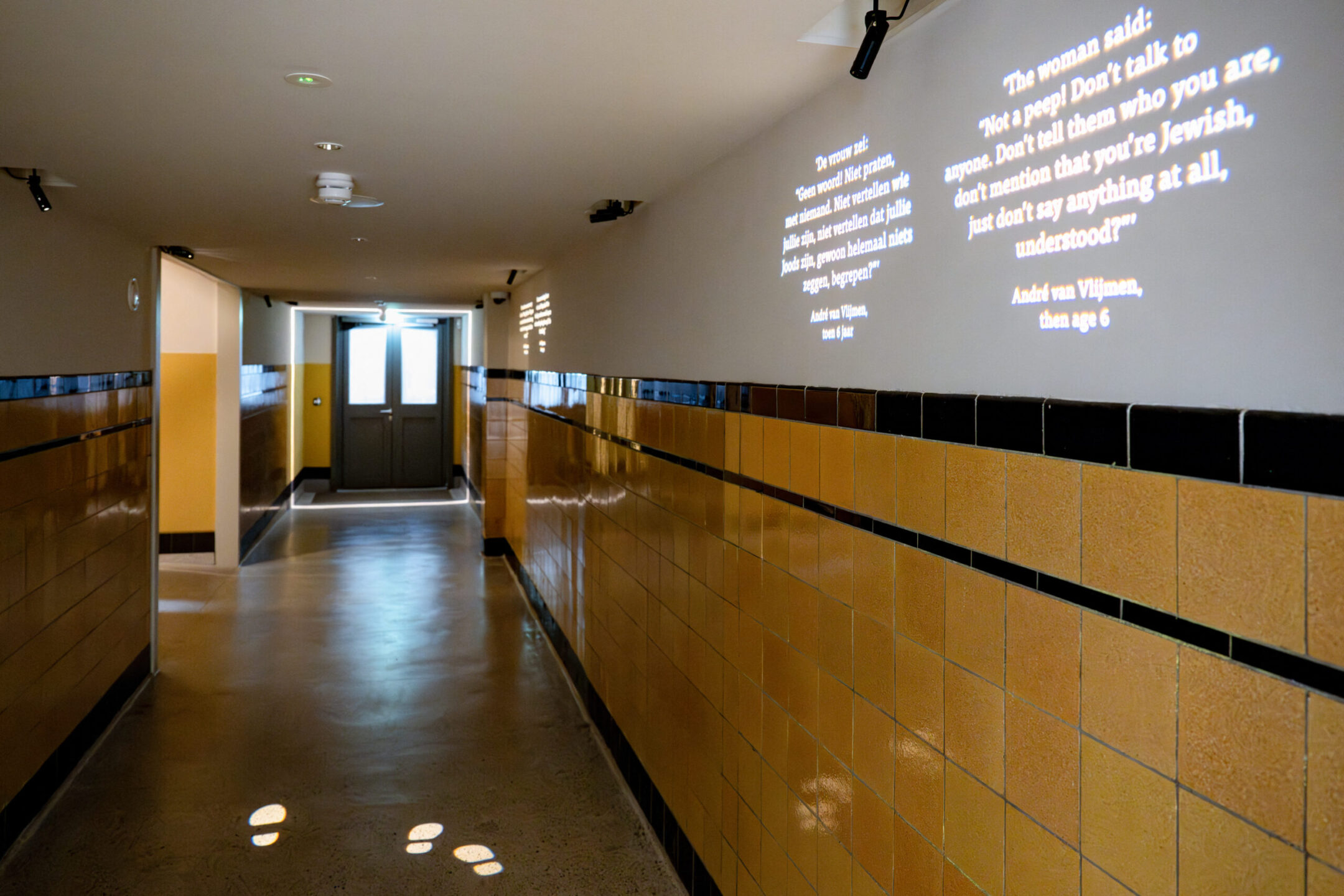
The National Holocaust Museum in Amsterdam, located in a former teachers college that played a crucial role in the Dutch resistance, includes the “escape” corridor which was used to smuggle small children away from the Nazis. (Nick Gammon/AFP via Getty Images)
The museum stands across the street from the Hollandsche Schouwburg, a theater that was popular with Jewish performers and audiences before the Nazis turned it into a major deportation center. In this building, 46,000 Jews were forced to await their transit to Westerbork.
The museum building was converted from a former teachers college that played a significant role in resistance against the Nazis. The school was next to a nursery, torn down after the war, where the Nazis placed children who could not fit in the overcrowded Hollandsche Schouwburg. Thousands of children waited at this nursery for deportation.
But the nursery’s director, Henriëtte Pimentel, helped about 600 children to escape. On her direction, children were lifted onto the schoolyard of the teacher’s college and handed to members of the Dutch resistance. These people, mainly young non-Jews in their twenties, took the children to a safe house and then to hiding addresses throughout the country.
“In just a few hundred square meters, we have two very important sites,” said Gringold. “One extremely burdened, sad, guilty landscape — the main site of deportations where most people who were imprisoned were deported and murdered. And on the other side, we have this site where 600 Jewish lives were rescued.”
The museum contains 2,500 items, including hundreds donated by survivors. Its installations include mementos from unknown victims along with stories of the Jewish and non-Jewish resistance. One exhibit is dedicated to the deluge of bureaucratic regulations that progressively restricted, segregated, robbed and finally deported Jews.
Schrijver said it was important to him that the museum feel much like its predecessor during the war: a bright, airy school building with sun streaming through the windows.
“A large majority of Holocaust museums worldwide, especially from the past, are dark places where the walls are dark gray or dark brown to transmit a feeling of narrowness — whereas the persecution and murder of the Jews happened during full daylight,” he said. “So you want this to be a light place and, if you put it bluntly, the darkness comes from the content.”
Though Schrijver and Gringold pushed for years to dedicate a museum exclusively to Holocaust history, they have not escaped the shadow of the present. As they prepared to open a museum “about the impact of exclusion and dehumanization,” the organizers said they were compelled to issue a statement on Israel’s war in Gaza, which began when Hamas attacked Israel on Oct. 7.
In a statement, the Jewish Cultural Quarter said it supported “a just and secure resolution for all those directly involved,” including Israel’s right to exist and Palestinians’ right to autonomy.
The presence of Israeli President Isaac Herzog during a dedication ceremony the day before the museum’s opening drew more than 1,000 pro-Palestinian protesters.
Gringold said she is heavy-hearted about the war in Israel and Gaza and the pall it cast over the museum opening. But she said she believed the museum she has labored over for 20 years would prove to hold a message that lasts beyond any particular moment.
“I didn’t work so hard on this museum for an opening event, I built this museum for a long-term event, a trend that we have been witnessing for many years — that knowledge about the mass murder of Jews in occupied Europe is diminishing, that we take democracy, the order of law, European cooperation and human rights for granted,” said Gringold. “It’s important that we know what the alternative was just over 80 years ago. We seem to forget that slowly as a nation, and when we don’t know about what humans are capable of, we are at risk of repeating history.”
JTA has documented Jewish history in real-time for over a century. Keep our journalism strong by joining us in supporting independent, award-winning reporting.
